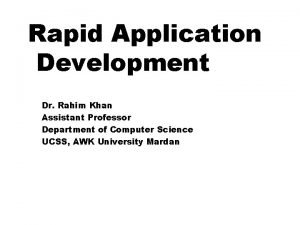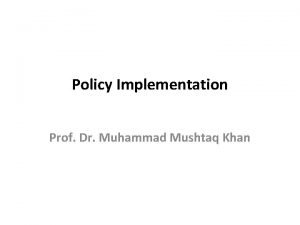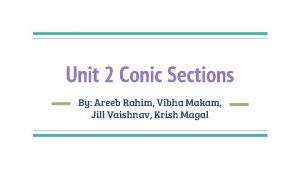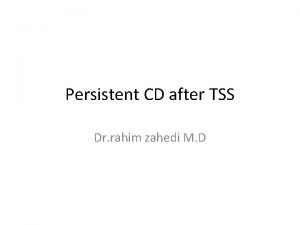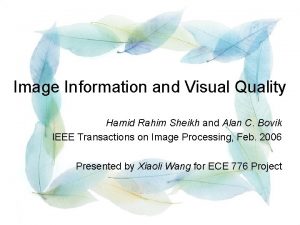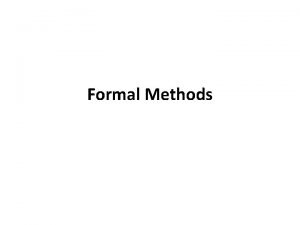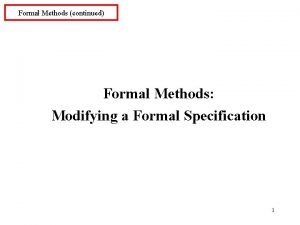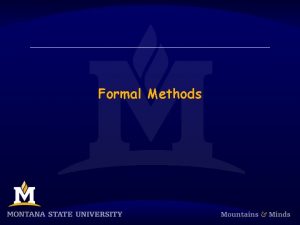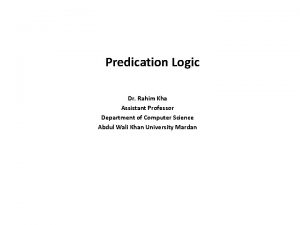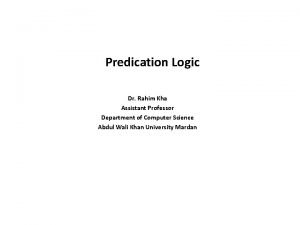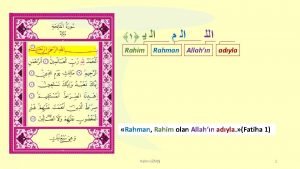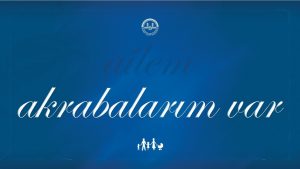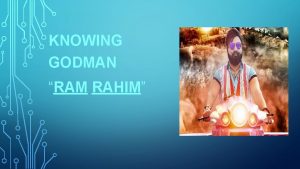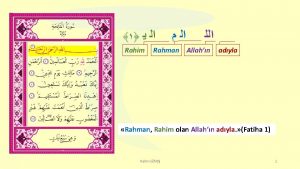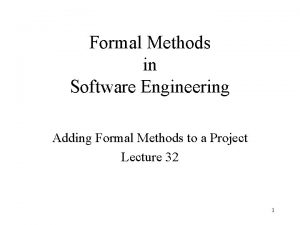Formal Methods Dr Rahim Khan Assistant Professor Department















- Slides: 15

Formal Methods Dr. Rahim Khan Assistant Professor Department of Computer Science Abdul Wali Khan University Mardan

Software System • Extensive Documentation • User Guides • Reference Manuals • Online Help • Interactive tutorials • Introduction of Dummies Yet, software behaviors are surprise to users Problems: 1. Requirements are hard to define 2. The way system will be used is hard to define

Software Engineering and Formal Methods § Every software engineering methodology is based on a recommended development process § proceeding through several phases: § Requirements, Specification, Design § Coding, Unit Testing § Integration and System Testing, Maintenance § Formal methods can § Be a foundation for designing safety critical systems § Be a foundation for describing complex systems § Provide support for program development

What are Formal Methods? § § Techniques and tools based on mathematics and formal logic Can assume various forms and levels of rigor § Informal § Low § Medium § High

Why Consider Formal Methods? § The development of a formal specification provides insights and an understanding of the software requirements and software design § Clarify customers’ requirements § Reveal and remove ambiguity, inconsistency and incompleteness § Facilitate communication of requirement or design § Provides a basis for an elegant software design § Traceability § System-level requirements should be traceable to subsystems or components

Formal Methods Concepts Formal Specification Methods Formal specification Proofs Model checking Abstraction

Formal Specification § The translation of non-mathematical description (diagrams, table, natural language) into a formal specification language § It represents a concise description of high-level behavior and properties of a system § Well-defined language semantics support formal deduction about the specification

Type of Formal Specifications § Model Oriented: Construct a model of the system behavior using mathematical objects like sets, sequences etc. § Statecharts, SCR, VDM, Z § Petri Nets, CCS, CSP, Automata theoretic models § Property Oriented: Use a set of necessary properties to describe system behavior, such as axioms, rules etc. § Algebraic semantics § Temporal logic models.

Formal Proofs § Proof is an essential part of specification § Proofs are constructed as a series of small steps, each of which is justified using a small set of rules § Proofs can be done manually, but usually constructed with some automated assistance

Model Checking § A technique relies on building a finite model of a system and checking that a desired property holds in that model § Two general approaches § temporal model checking § automaton model checking § Use model checkers § SMV

Abstraction § Representation of the program using a smaller model § Allows you to focus on the most important central properties and characteristics § Getting the right level of abstraction is very important in a specification.

Mathematical Models § Abstract representations of a system using mathematical entities and concepts § Model should captures the essential characteristics of the system while ignoring irrelevant details § Model can be analyzed using mathematical reasoning to prove system properties or derive new behaviors. § Two types § Continuous models § Discrete models

Formal Specification Process Model § § § Clarify requirements and high level design Articulate implicit assumptions Identify undocumented or unexpected assumptions Expose defects Identify exceptions Evaluate test coverage

Benefits of Formal Specifications § Higher level of rigor leads to better problem understanding § Defects are uncovered that would be missed using traditional specification methods § Allows earlier defect identification § Formal specification language semantics allow checks for selfconsistency § Enables the use of formal proofs to establish fundamental system properties and invariants

Limitations to Formal Methods § Requires a sound mathematical knowledge of the developer § Different aspects of a design may be represented by different formal specification methods § Useful for consistency checks, but formal methods cannot guarantee the completeness of a specifications § For the majority of systems Does not offer significant cost or quality advantages over others
 Dr rahim khan
Dr rahim khan Promotion from assistant to associate professor
Promotion from assistant to associate professor Cuhk assistant professor salary
Cuhk assistant professor salary Professor mushtaq khan
Professor mushtaq khan A-wax pattern recognition
A-wax pattern recognition Areeb rahim
Areeb rahim What is this
What is this Objectives of school health programme
Objectives of school health programme Dr. maryam zahedi clinic
Dr. maryam zahedi clinic Visual information fidelity
Visual information fidelity Wan abdul rahim kamil
Wan abdul rahim kamil Alhamdulillahi rahmanir rahim
Alhamdulillahi rahmanir rahim Auzu billahi minash shaitanir rajeem benefits
Auzu billahi minash shaitanir rajeem benefits Abdul raheem wahab
Abdul raheem wahab Allah cc rahman ve rahim isimlerinin yansımaları
Allah cc rahman ve rahim isimlerinin yansımaları Ur
Ur
